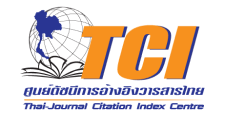References
Singh O, Ali M, Akhtar N, Srivastava SK. Phytochemical and pharmacological profile of Aloe vera. J Pharm Res Int. 2017;19(1):1–12.
Gonzalez AC, Costa TF, Andrade ZA, Medrado AR. Wound healing-a literature review. An Bras Dermatol. 2016;91(5):614620.
SurjusheA,VasaniR,Saple DG. Aloevera:Ashortreview.Indian J Dermatol. 2008;53(4):163–166.
Jurenka JS. Anti-inflammatory properties of curcumin, a major constituent of Curcuma longa: A review of preclinical and clinical research. Altern Med Rev. 2009;14(2): 141–153.
Molan PC.The evidence supporting the use of honey as a wound dressing. Int J Low Extrem Wounds. 2006;5(1):40–54.
Preethi KC, Kuttan G, Kuttan R. Anti-inflammatory activity of flower extract of Calendula officinalis Linn. and its possible mechanism of action. Indian J Exp Biol. 2009;47(2): 113–120.
Biswas K, Chattopadhyay I, Banerjee RK, Bandyopadhyay U. Biological activities and medicinal properties of neem (Azadirachta indica). Curr Sci. 2002;82(11):1336–1345.
Shukla A, Rasik AM, Dhawan BN. Asiaticoside-induced elevation of antioxidant levels in healing wounds. Phytother Res. 1999;13(1):50–54.
Recommended Citation
Chaiyawatthanananthn, Pannawat.
2025
A Medicinal Plants Approach to Wound Healing.
Asian Medical Journal and Alternative Medicine. 25,
1 (Apr. 2025 ), 2-3.
Available at: https://doi.org/10.70933/2773-9465.1001



